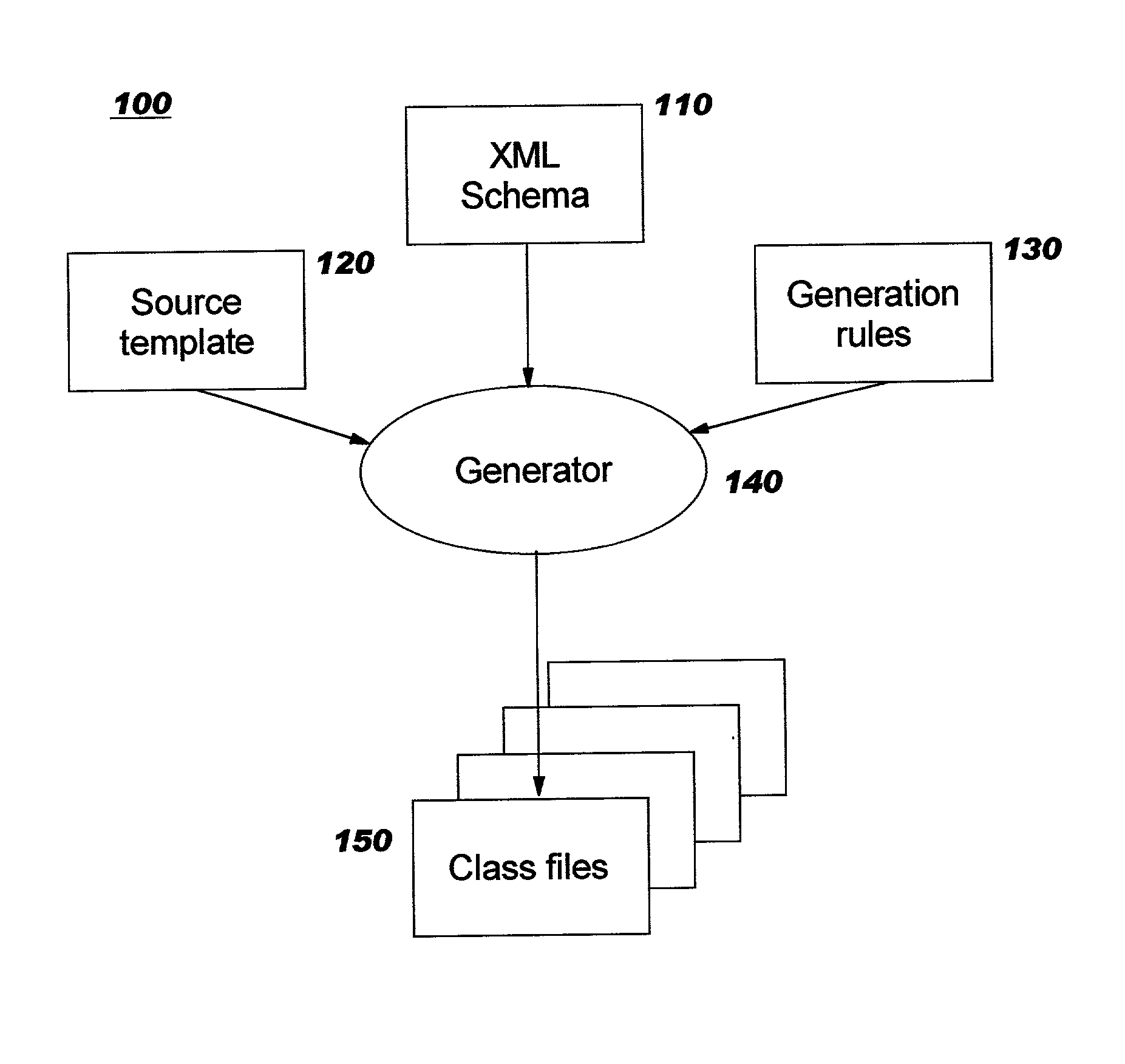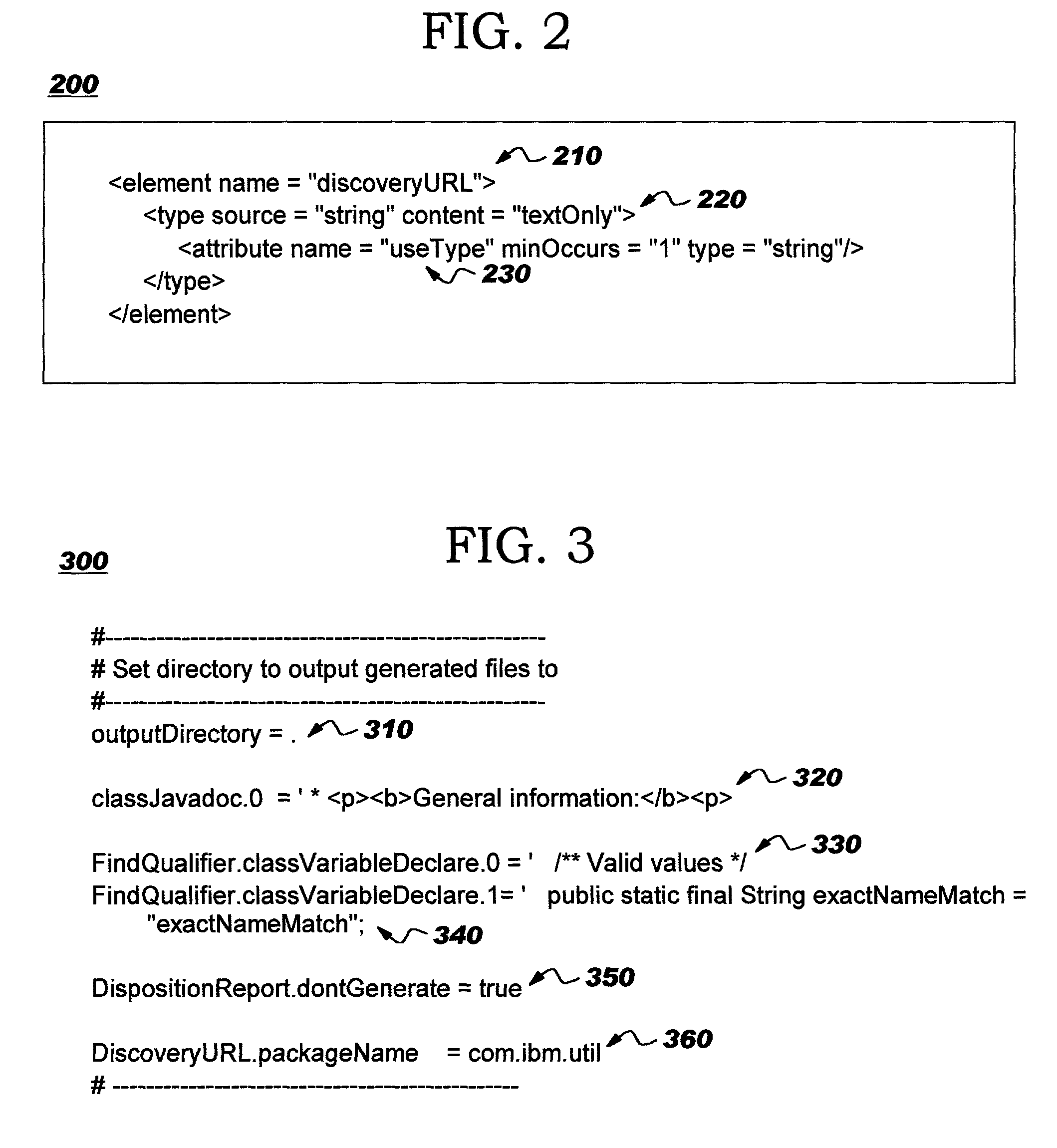Generating class library to represent messages described in a structured language schema
a structured language and class library technology, applied in the field of computer software, can solve the problems of large programming effort required for initial creation of the library, low quality of created code, and large amount of effort typically expended creating
- Summary
- Abstract
- Description
- Claims
- Application Information
AI Technical Summary
Benefits of technology
Problems solved by technology
Method used
Image
Examples
Embodiment Construction
[0034] The present invention provides techniques for programmatically generating class libraries for messages which are described by a structured definition. As will be described in detail herein, preferred embodiments programmatically generate a class library representing the messages which can be sent and received according to the information specified in an XML schema. For purposes of illustration but not of limitation, preferred embodiments of the present invention are described in terms of elements which are defined according to an XML schema. However, the inventive concepts disclosed herein may be adapted to messages which are defined using other structured markup languages and / or which are defined using other definitional approaches (such as DTDs). Thus, references herein to "XML" and "schema" are intended to encompass similar languages and definitions.
[0035] Before discussing how the preferred embodiments operate, a number of advantages of the present invention over prior ar...
PUM
 Login to View More
Login to View More Abstract
Description
Claims
Application Information
 Login to View More
Login to View More - R&D
- Intellectual Property
- Life Sciences
- Materials
- Tech Scout
- Unparalleled Data Quality
- Higher Quality Content
- 60% Fewer Hallucinations
Browse by: Latest US Patents, China's latest patents, Technical Efficacy Thesaurus, Application Domain, Technology Topic, Popular Technical Reports.
© 2025 PatSnap. All rights reserved.Legal|Privacy policy|Modern Slavery Act Transparency Statement|Sitemap|About US| Contact US: help@patsnap.com



